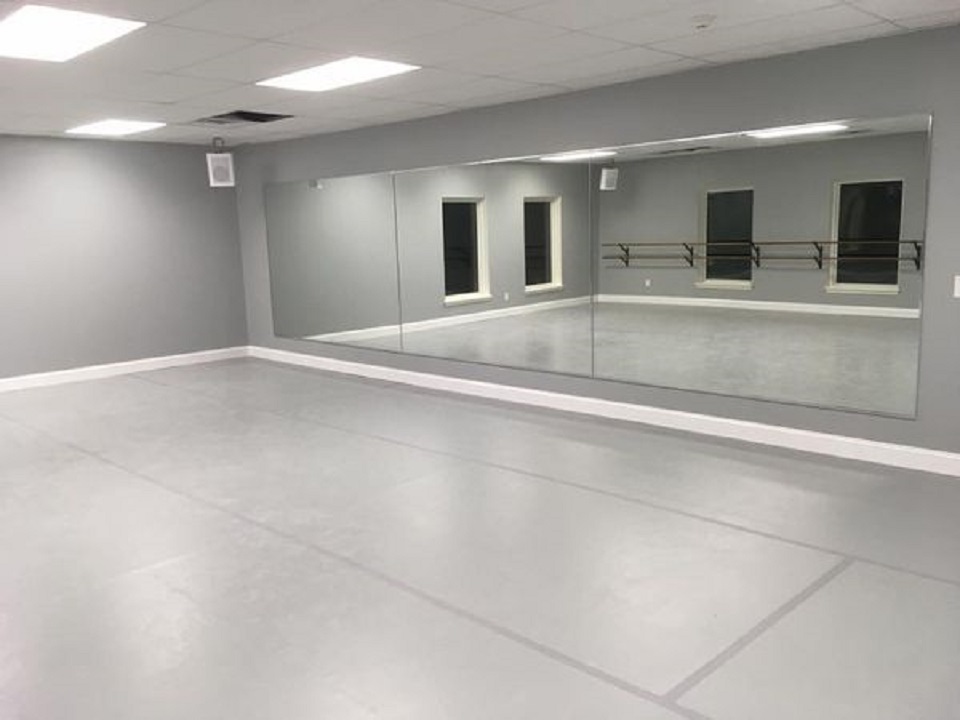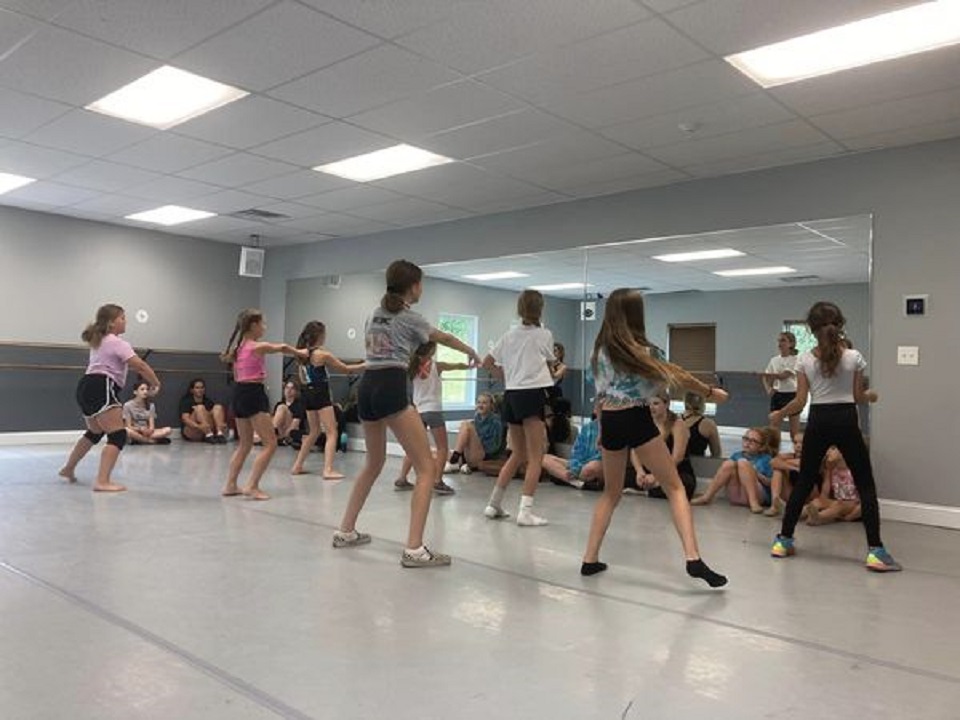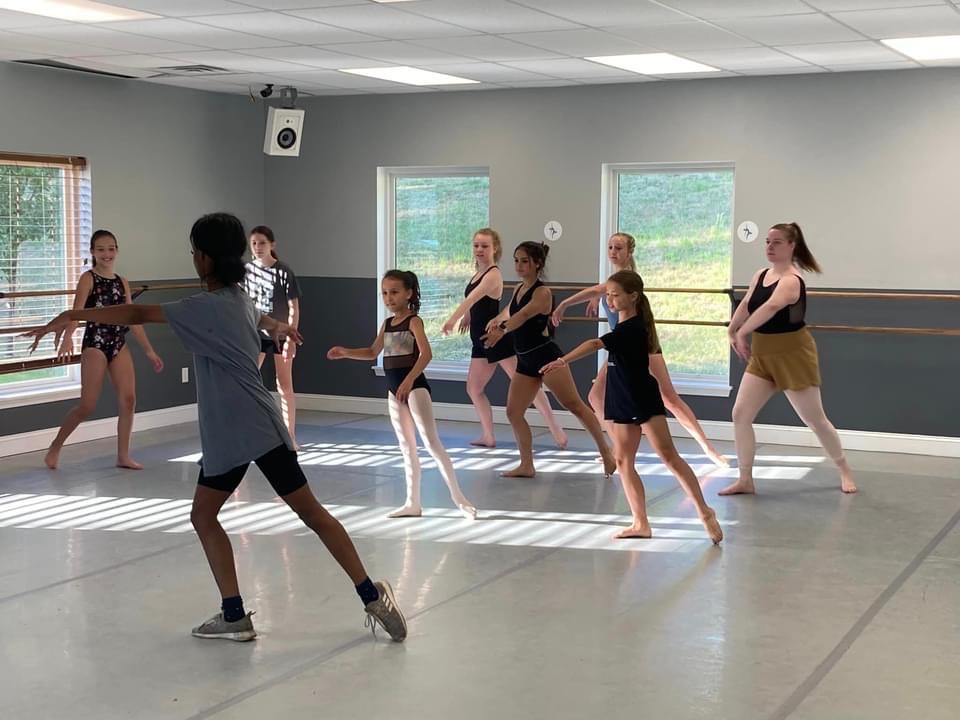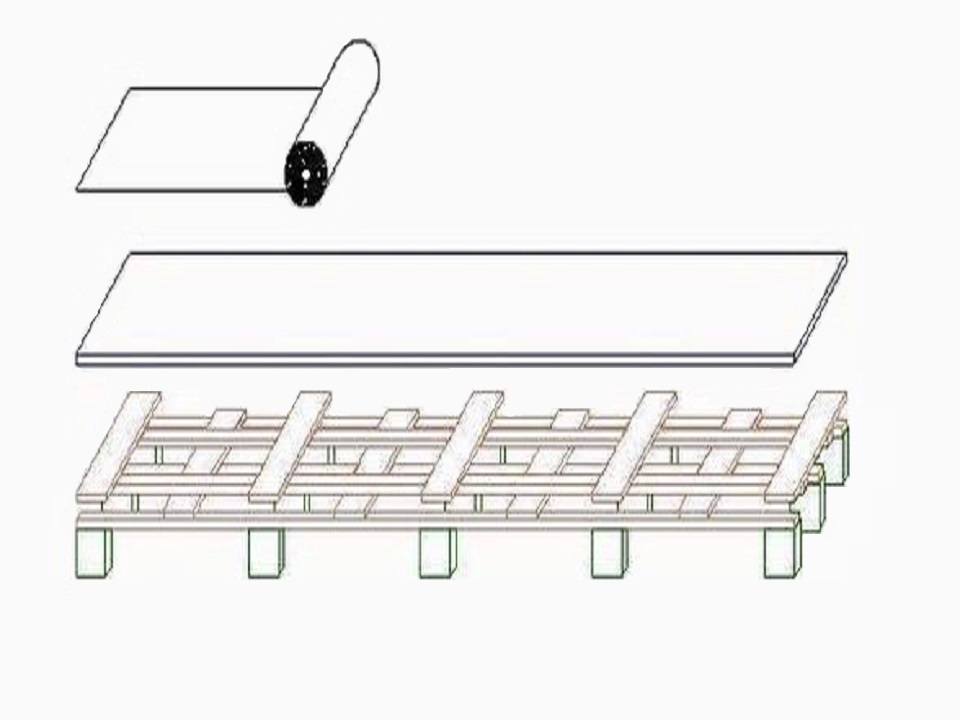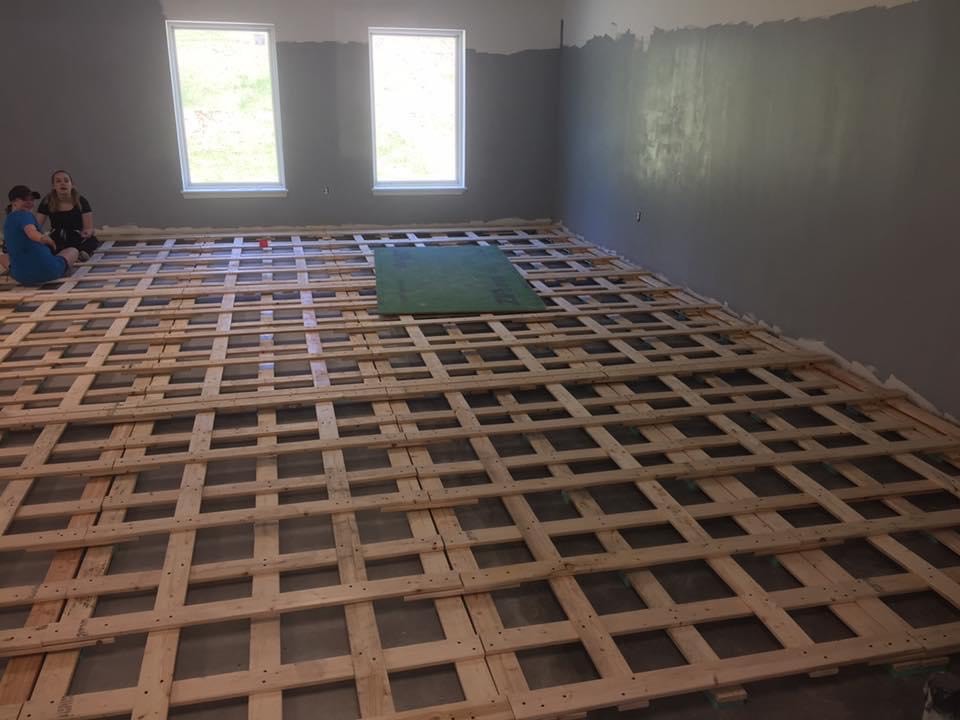Full-Sprung Wood-Woven Marley Dance Floors
Introduction
We have invested considerable resources to provide the highest quality facilities and instruction available. We are proud to offer a state of the art, world-class, dance facility. Spa City Dance and the Arts is the only studio in the area with full sprung, interlaced-wood, Marley dance floors. Many studios will use foam over concrete, this is not a sprung dance floor. A proper sprung dance floor involves a layered web pattern of wood that is designed in intricate detail to ensure that every point on the floor has an equal and adequate amount of spring action. The wood web is covered in a strong plywood that is coated and sealed to prevent moisture damage and splintering, and covered with Marley.
The core of any dance studio is their dance floors! The type of floor makes a huge difference in injury rates, including hip, knee, ankle and back injuries, shin splints, and can even help protect against growth plate problems in children from years of high impact on joints. The best floors in the industry are wood sprung floors. Unlike foam, they provide point and area elasticity. Foam padding underneath floor only provides point elasticity, which reflects the impacts from landing back into the student. Wood sprung dance floors also provide area elasticity, which spreads and absorbs the impact over the area of the floors. Wood sprung dance floors are very expensive, but it is a great sign the studio is focused on investing in the best and safest for their students.
Benefits of a Sprung Floor
A link has been established between dancing on unyielding surfaces such as hardwood over cement, and foot, ankle, and back injury. Dancing on a sprung floor is essential to protect growing children and young dancers from lifelong injuries.
Dancing creates energy on impact with the floor. If this energy is not absorbed by the floor, it is reflected back into the body of the dancer. This energy, called impact energy, is commonly felt in joints and in the spine as these are the moving areas that give. If the energy generated by dance is returned to the body, it can result in shin splints, fractures, multiple types of knee and hip problems, tendonitis, and ankle sprains, as well as muscle problems such as torn muscles which can lead to long term scar tissue buildup. Particularly important are knee and hip problems as children develop. The faster the joint flexes in order to absorb the force of landing a leap or jump, the greater the velocity of the eccentric muscle contraction increasing the potential for injury. This is significantly reduced with a sprung floor. If these risks are not mitigated, it can result in acute injuries as well as chronic injuries for the life of the dancer. A dance floor that is both impact absorbent and provides lateral foot support is essential.
Traditional Sprung Floor versus Foam Padded Floor
Many dance studios install thick foam padding underneath their floor and call the floor a sprung floor. This is incorrect. Foam can provide some protection, but the protection is minimal. Foam does not spread the force of the impact and provides very little counter force. It provides slight reduction in momentum prior to the impact, but does not provide the full benefits of a sprung floor. A foam floor is primarily point elastic instead of area elastic. A sprung floor spreads the force of impact along the floor and provides counter force to allow the student to be aided in reacting to the impact.
Why Do Studios Skip Sprung Floors for Foam?
Sprung floors are very intricate to design and install. They tend to be very expensive and require maintenance every few years compared to a foam floor that can be installed and forgotten. Many studios are not equipped to provide the maintenance nor do they want to spend the time to. Sprung floors are also very expensive to install and maintain, making it far too expensive for most studios. The design process alone is a large cost as each sprung floor is different and must be designed for the room.
